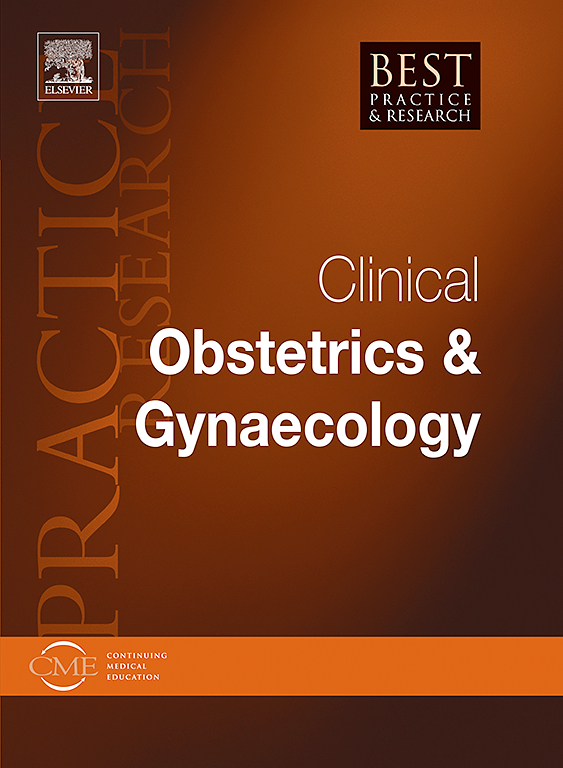Considerations and approaches for early onset fetal anemia due to red cell alloimmunization
IF 4.1
2区 医学
Q1 OBSTETRICS & GYNECOLOGY
Best Practice & Research Clinical Obstetrics & Gynaecology
Pub Date : 2025-03-20
DOI:10.1016/j.bpobgyn.2025.102602
引用次数: 0
Abstract
There is no widely accepted definition for early onset hemolytic disease of the fetus and newborn (EOS-HDFN). Several reported series of patients managed with intravascular intrauterine transfusions (IVT's) prior to 20–22 weeks' gestation have been associated with a perinatal mortality of 20 %. It would therefore seem appropriate to define EOS-HDFN as a fetal demise, hydrops fetalis or the need for intrauterine transfusion for suspected fetal anemia prior to 20–22 weeks' gestation. Evaluation of the patient in her next pregnancy with EOS-HDFN history should include a free fetal DNA analysis at 10–12 weeks' gestation to confirm the at-risk fetus. Weekly middle cerebral artery peak systolic velocity determinations using Doppler ultrasound should be initiated by 15 weeks' gestation. Immunomodulation with intravenous immune globulin with or without plasmapheresis should be considered as early at 10–12 weeks' gestation. If IUT's are required prior to 20 weeks' gestation, an intraperitoneal approach can be used until a more advanced gestation can be attained when intravascular fetal access is possible. In the near future, neonatal Fc receptor blockade with a monoclonal antibody may supplant invasive IUT's in the treatment of EOS-HDFN.
红细胞同种免疫导致的早发性胎儿贫血的考虑因素和方法
对于早发性胎儿和新生儿溶血性疾病(EOS-HDFN),目前还没有广泛接受的定义。据报道,在妊娠20 - 22周之前接受血管内宫内输血(IVT)治疗的患者的围产儿死亡率为20%。因此,将EOS-HDFN定义为胎儿死亡、胎儿水肿或在妊娠20-22周之前因怀疑胎儿贫血而需要宫内输血似乎是合适的。对有EOS-HDFN病史的下次妊娠患者的评估应包括妊娠10-12周时的游离胎儿DNA分析,以确认是否存在危险胎儿。每周用多普勒超声测定大脑中动脉收缩速度峰值应在妊娠15周开始。早在妊娠10-12周就应考虑使用静脉注射免疫球蛋白伴或不伴血浆置换进行免疫调节。如果在妊娠20周之前需要宫内节育器,则可以使用腹腔内入路,直到妊娠更晚期,胎儿可以进入血管内。在不久的将来,单克隆抗体阻断新生儿Fc受体可能取代有创IUT治疗EOS-HDFN。
本文章由计算机程序翻译,如有差异,请以英文原文为准。
求助全文
约1分钟内获得全文
求助全文
来源期刊
CiteScore
9.40
自引率
1.80%
发文量
113
审稿时长
54 days
期刊介绍:
In practical paperback format, each 200 page topic-based issue of Best Practice & Research Clinical Obstetrics & Gynaecology will provide a comprehensive review of current clinical practice and thinking within the specialties of obstetrics and gynaecology.
All chapters take the form of practical, evidence-based reviews that seek to address key clinical issues of diagnosis, treatment and patient management.
Each issue follows a problem-orientated approach that focuses on the key questions to be addressed, clearly defining what is known and not known. Management will be described in practical terms so that it can be applied to the individual patient.

 求助内容:
求助内容: 应助结果提醒方式:
应助结果提醒方式:


